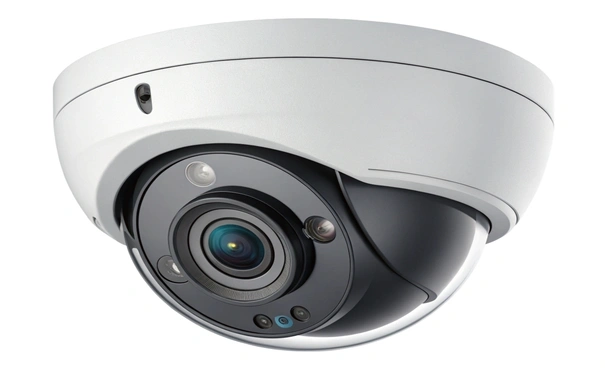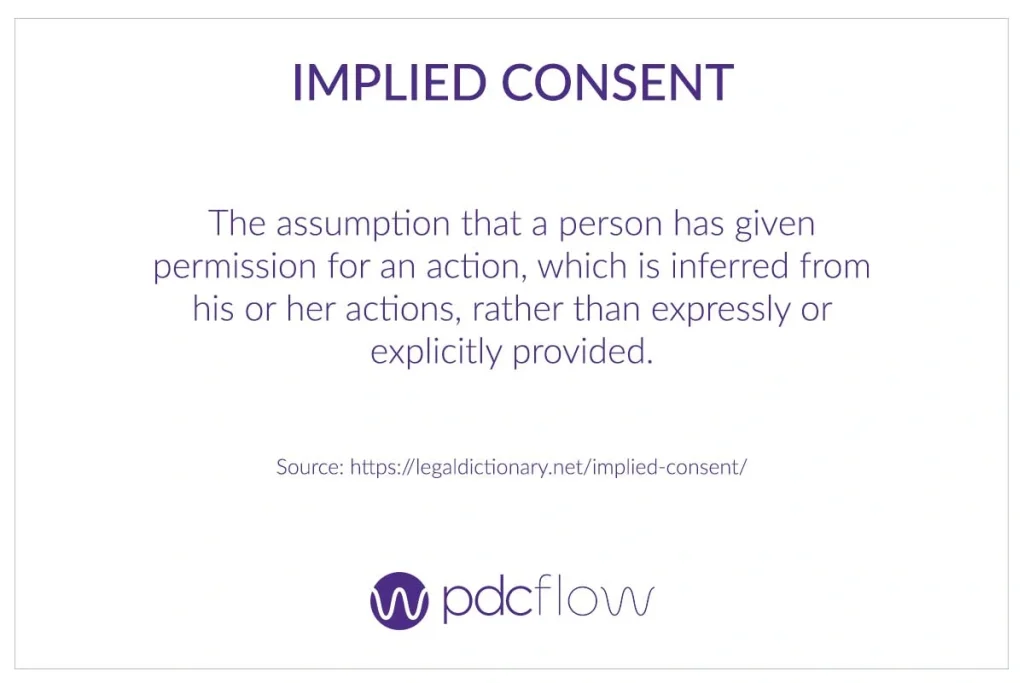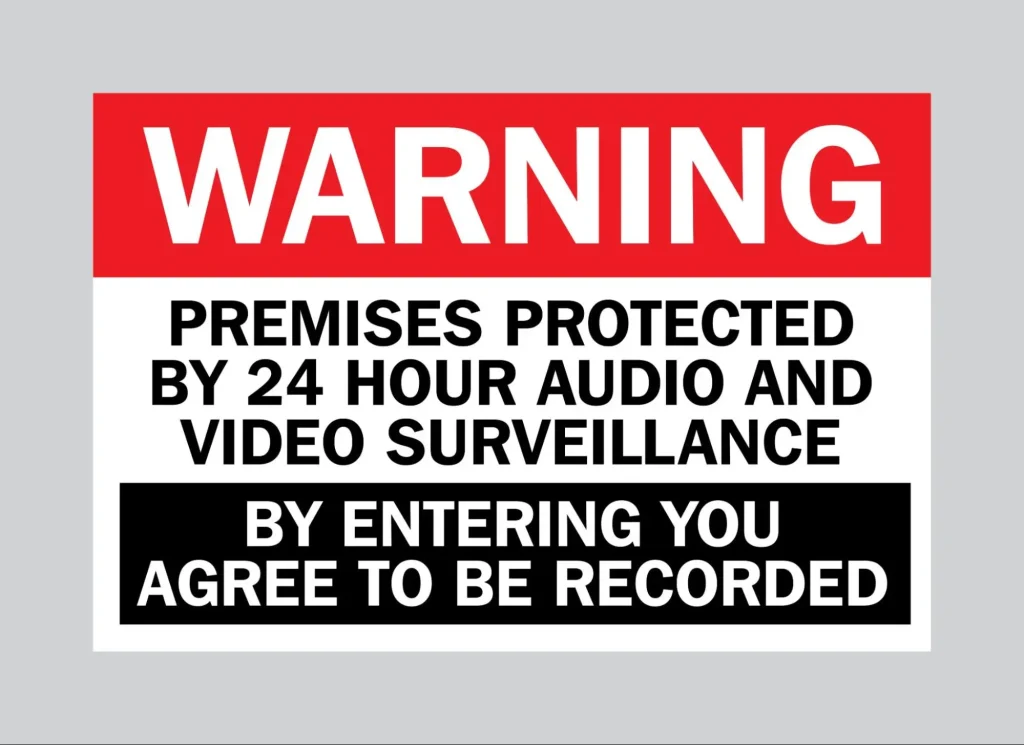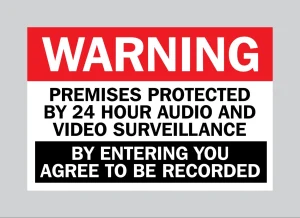What is audio surveillance?

Audio surveillance is capturing or recording voices in workplaces. Modern CCTV cameras have audio recording (microphones) capabilities along with live video recording. For example, IP cameras with built-in microphones.
It may also include recording phone or VoIP conversations. Or the use of a hidden mic to record regular conversation.
It’s different from video-only surveillance and may include the intent to record conversations for future use.
Why businesses are turning to workplace audio surveillance in 2026:
Audio surveillance adds an extra layer of security. Hearing what cameras can’t see helps to detect intruders earlier. For example, suspicious sounds like breaking glass and raised voices.
They add more context to an event. For example, emergency distress calls, such as elevator entrapment, can speed up real-time verification and dispatch of rescue teams.
Audio can help verify alarms triggered by video surveillance.
Audio detection can be a lifesaver in situations such as slip-and-fall incidents, violence, smoke and fire alarms, and when live operators can broadcast pre-recorded messages or live announcements to guide people during evacuations or other incidents.
What problems are businesses facing because of workplace audio surveillance?
Across recent 2025 business and tech reporting, audio surveillance has emerged as the next major privacy flashpoint in the workplace.
A gunshot-detection system that also listens for human voices has drawn sharp criticism from civil liberties groups. They say that it has crossed the line from safety monitoring into mass, warrantless eavesdropping.
In one high-profile case, a company allegedly activated employees’ laptop microphones to monitor remote workers. It has fired a debate over the legality of covert workplace recording.
At the same time, cybersecurity firms like McAfee highlight the parallel rise of AI voice spoofing and deepfakes, illustrating how captured voice data can be weaponized.
Even as companies like Lenovo promote AI-driven business devices with embedded audio analytics, legal frameworks lag behind these technologies.
Collectively, these stories reveal a critical tension: the rapid commercialization of voice-based surveillance and analytics is outpacing U.S. privacy law.
So what does “listening at work” really mean in 2026? This takes us to the point that, to avoid these legal complications, you need to better understand the law.
What counts as “consent”?
Let’s just take a moment to understand the different forms of consent. Especially around recording conversations or using monitoring tools, the difference between express and implied consent matters.
Express Consent:

Express consent is a clear yes. The consent is clear, direct, and unmistakable. It’s when someone agrees and notifies in writing or verbally.
It’s the strongest form of consent because it shows the person knew exactly what they were agreeing to.
Examples of express consent in business:
- Signing a written consent form or policy acknowledgment.
- Saying “Yes, I agree to this call being recorded,” during a conversation.
- Clicking “I Accept” on an online agreement.
Implied consent:

Implied consent means to continue after being informed by one party. Implied consent is not said out loud or written down. It’s assumed from someone’s actions or lack of objection after being notified.
The key is notice. If someone is told that a recording or monitoring is happening and chooses to continue anyway, their consent is considered implied.
Examples of implied consent:
- You hear an automated message say, “This call may be recorded for quality assurance,” and you keep talking.
- You see a visible sign that says “Audio and video recording in progress” and still enter or stay in that space.
What are federal laws regarding workplace audio surveillance?
The ECPA and the Wiretap Act make it illegal to intentionally intercept or record oral, wire, or electronic communications unless at least one party consents.
This means that:
- Employers may record only if they are a party to the conversation or have prior consent from at least one participant.
- Hidden microphones that record conversations not involving the employer or without consent violate the law.
However, there is an exception if audio surveillance occurs in the ordinary course of business (e.g., call quality control when employees are aware).
But there is no way businesses are allowed to record private conversations unrelated to business secretly.
What are one-party consent states?
Roughly 35 states follow one-party consent: recording is legal if one person in the conversation (including the employer) consents.
However, employers must still avoid “surreptitious recording” in private spaces (e.g., locker rooms, restrooms, changing areas).
Even in these states, courts often apply a “reasonable expectation of privacy” test: if employees could reasonably expect privacy, the recording is unlawful.
What are state statutes and consent laws regarding workplace audio surveillance?
In some states, everyone being recorded must agree to the recording for it to be legal. This is known as All-party consent (a.k.a. two-party consent) states.
If not, it can lead to criminal charges or lawsuits.
Examples:
- California (Penal Code §632): It’s illegal to record private conversations without permission from everyone involved. This includes the workplace, except in public areas where there’s no expectation of privacy (like a store lobby).
- Illinois, Maryland, Massachusetts, Pennsylvania, and Washington have similar laws.
- California courts have fined employers for recording in private places, such as lunchrooms or restrooms.
- Illinois law (720 ILCS 5/14-1) clearly says that recording private employee conversations is not allowed unless everyone agrees.
A recent Justia 50-state survey says most U.S. states follow one-party consent. A participant may lawfully record a call or conversation, while a smaller group requires all-party consent (e.g., California, Pennsylvania, Maryland, Massachusetts, Illinois, Washington).
Exceptions exist (law enforcement, emergencies), and some states hinge on a reasonable expectation of privacy or implied consent after notice (beep tones/announcements).
Summary of the laws regarding audio surveillance:
| Level | Legality of audio surveillance | Key condition |
|---|---|---|
| Federal | Legal only if one party consents; otherwise illegal. | Employer must be a party or have consent. |
| State (All-party consent) | Illegal without consent from all participants. | Applies in CA, IL, MA, MD, PA, WA, and other states. |
| State (One-party consent) | Legal if at least one participant consents, but restricted by privacy zones. | Still high legal risk without notice. |
| Private/Covert Recording | Generally illegal, especially in areas with an expectation of privacy. | May incur civil and criminal penalties. |
How can a workplace use audio surveillance legally?
1. Understand the legal baseline completely:
The basic rule:
Federal law says you can’t record audio unless at least one person in the conversation agrees.
State laws differ:
- Most states only need one person’s consent.
- Some states require everyone’s consent, such as California, Illinois, Massachusetts, Maryland, Pennsylvania, and Washington.
2. Get consent the right way (and prove it):
- The written, explicit consent is best. Have employees or participants sign a consent form or acknowledge the policy before any recording.
- Give notice before recording calls or meetings. Use a recorded message, on-screen “Recording” banner, or a periodic beep so everyone knows it’s being recorded.
- Implied consent (when someone continues after being told) is allowed in some states, but don’t rely on it if you’re in an all-party consent state.
- It’s better to keep records of consent, such as signed forms, logs, or meeting recordings that show the announcement.
3) Limit where and what you record:
No-go zones:
Never record in private areas such as restrooms, locker rooms, or medical rooms.
Breakrooms and lunch areas are risky; don’t record audio there unless everyone agrees and you have a strong business reason.
Keep purpose clear:
Only record audio for a specific, valid reason. For example, customer service quality or incident review in a cash-handling area.
Limit what you collect:
Use video-only when audio isn’t needed, and turn off microphones by default on cameras that don’t require sound.
Customer service calls:
Play a clear message, such as “This call may be recorded…” before the call starts, and make sure it’s included in the recording.
Have a written policy and keep recordings for 30–90 days only.
High-risk cash areas:
Use video by default. Add audio only when truly needed, with visible signs and written consent from all staff involved.
Internal meetings:
The host should announce that the meeting is being recorded, ensure the platform displays a recording banner, and note that everyone has given consent to be recorded.
Best practices for informing staff and maintaining trust while monitoring ethically:
- When you craft your surveillance policy, make it a joint policy co-owned by security, HR, and IT.
- Try scheduling biannual training, or even incorporating it into slides or FAQ documents that HR can share during onboarding.
- Use short employee videos explaining “what is recorded, why it matters, and how privacy is protected.
- AI voice analytics (emotion/stress scoring) without explicit, informed, revocable consent and a strong, documented business need.
- Always confirm who owns the audio data.
- Add a section to vendor contracts that defines retention periods, access rights, and breach reporting requirements.
- Use encrypted, U.S.-based storage and keep logs of who accessed recordings.
- Delete files after their retention period ends.
- Work with your security integrators to build privacy into every installation.
- Disable microphones by default.
- Require written confirmation before turning on the audio.
- Store audio only when an event triggers it, such as a panic button or alarm.
Remote video monitoring and employee privacy:

Remote Video Monitoring is legal in most workplaces when it serves a legitimate business purpose, such as protecting assets, ensuring safety, or preventing theft.
U.S. privacy laws focus on how monitoring is done, not where the observer is located. Whether footage is viewed on-site or at a remote monitoring center makes no legal difference.
What matters is that employees are informed and recording occurs in public or work areas, not in places where people expect privacy.
To stay compliant:
- Place cameras only in work zones, entrances, warehouses, and exterior areas.
- Avoid restrooms, locker rooms, or break areas.
- Post clear signage that states monitoring is in use.
- Train operators to focus on security events, not employee behavior.
Remote monitoring adds convenience, but the same privacy and notice rules apply as on-site systems.
An audio recording does not always constitute a privacy invasion:
Audio recording can be lawful and ethical when done with consent, notice, and purpose.
The law does not consider every recording an invasion of privacy; it applies only to recordings made secretly or in areas where people reasonably expect privacy.
If an employer provides notice and records for an apparent security reason, privacy is not violated.
To protect privacy rights:
- Get written or digital consent before enabling audio.
- Explain why the recording exists (for example, to document incidents or verify safety procedures).
- Limit access to audio files to authorized staff.
- Keep recordings for a defined period, then delete them.
Audio recording becomes a privacy issue only when it is secret, excessive, or unrelated to legitimate business needs.
When managed transparently and within the law, it helps resolve disputes, support investigations, and improve workplace safety without crossing privacy lines.
Frequently asked questions about workplace audio surveillance?
1. Is audio surveillance legal in the workplace?
Federal and state laws limit audio surveillance. Under federal law, recorded conversations require the consent of only one party, whereas some states require the consent of all parties. Always follow the stricter rule.
You must make a list of state laws that are relevant to your sites. Review it every year. Default to no microphones on until you verify that some kind of consent is implied.
2. Can my employer record audio without my knowledge?
Not at all. It is illegal to record audio without an employee’s consent and knowledge in many states (and even more so in two-party consent territories such as California or Pennsylvania). Employers should notify employees that audio recording devices are being used.
3. Can you record audio without consent?
It depends on the state. States that allow one-party consent recording permit it when at least one participant agrees.
States that require two-party consent for recording conversations, meaning that every person involved in the conversation must agree to be recorded.
In a state like Florida, where everyone must consent before recording (as you are breaking the law), we would face civil and criminal liability.
4. Can employers record audio?
Employers can record video for security purposes, but often cannot make an audio recording without clear notice. Or without the employee’s agreement to participate in such monitoring. Businesses should have written policies and post visible notices to comply with privacy and labor laws.
5. Can I secretly record audio at my job?
The only time recording audio at work would be legal is if it complies with state consent laws and the intent is legitimate (such as monitoring for customer service with notice). Recording private conversations in secret is usually illegal.
6. Is it illegal to record audio at work?
Yes, it can be. In two-party consent states, recording audio at work without informing all participants is illegal and may lead to fines or lawsuits. Even in one-party states, employers must ensure recordings don’t invade reasonable expectations of privacy.
Conclusion:
Workplace audio surveillance is legal when it respects consent, notice, and purpose.
Federal law allows recording if at least one person agrees, but many states require the consent of everyone involved. Employers must always follow the stricter rule.
Audio and video monitoring serve valid security goals. They help confirm alarms, verify incidents, and protect both people and property.
What matters is transparency, telling employees what is recorded and why.
Covert recording or monitoring in private areas is never legal. But when used responsibly, with proper consent and clear limits, audio surveillance does not invade privacy.
Contact us today for a customized security solution for your business.





